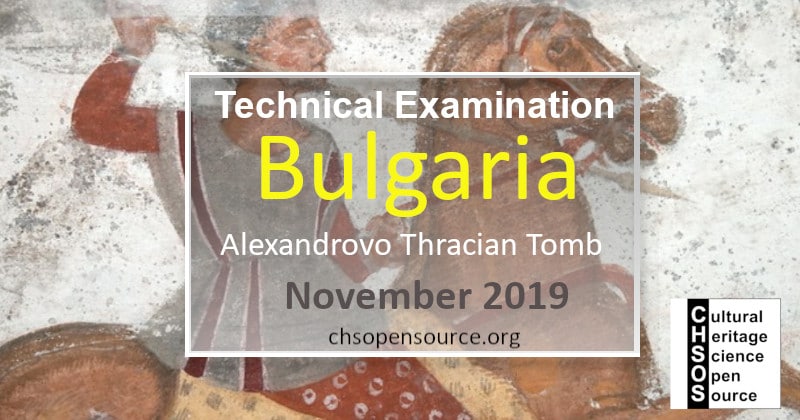
Delivered a 3 days (Nov 2-4, 2019) archaeology examination of several wall paintings in a Thracian burial tumulus at Alexandrovo, Bulgaria. The project is administered by the Balkan Heritage Foundation, along with the Bulgarian Archaeological Institute.

The Balkan Heritage Foundation is a Bulgarian public, non-profit, non-governmental organization. Its mission is to support the protection, conservation, management and promotion of cultural and historical (both tangible and intangible) heritage of Southeastern Europe as a precondition for sustainable development of the region.
The Alexandrovo Tomb
Discovered in 2000, this Thracian tomb is located under a huge artificial mound. It is dated to the fourth century BC and it is considered as one of the most important recent discoveries since there are very few sites with wall decoration known from this period.


It holds important historical, cultural and scientific information about the religion and lifeways of the ancient Thracians, as well as about their construction and painting techniques. Although objects and burial remains were missing, the architecture and wall paintings are in their original state, without any repairs, additions or changes. See here a full description of this tomb.



The Examination Plan
This technical documentation was done using Technical Photography, Infrared Reflectography, Multispectral Imaging, RTI, and Dstretch.

The first day we moved from Sofia to Haskovo, the main town near Alexandrovo village, which served as the base for the team. From Haskovo, the tomb is just 20 min drive. The main challenge in this kind of documentation was space. The tomb was relatively tiny and it was compelling to proceed to document its wall paintings. Another issue is humidity which is very high, almost 100% in this kind of environment.

The equipment was all fit in one luggage. It contained:
- Radiation sources: 2 x Elio halogen lamps, 2 x Alice IRF lamps, 1 x Fabrizio UV lamp.
- TP Photography kit: Nikon D800, Robertina filters set.
- Antonello, MSI system
- RTI sphere and bracket to hold on the wall
- IRR camera plus pano head













